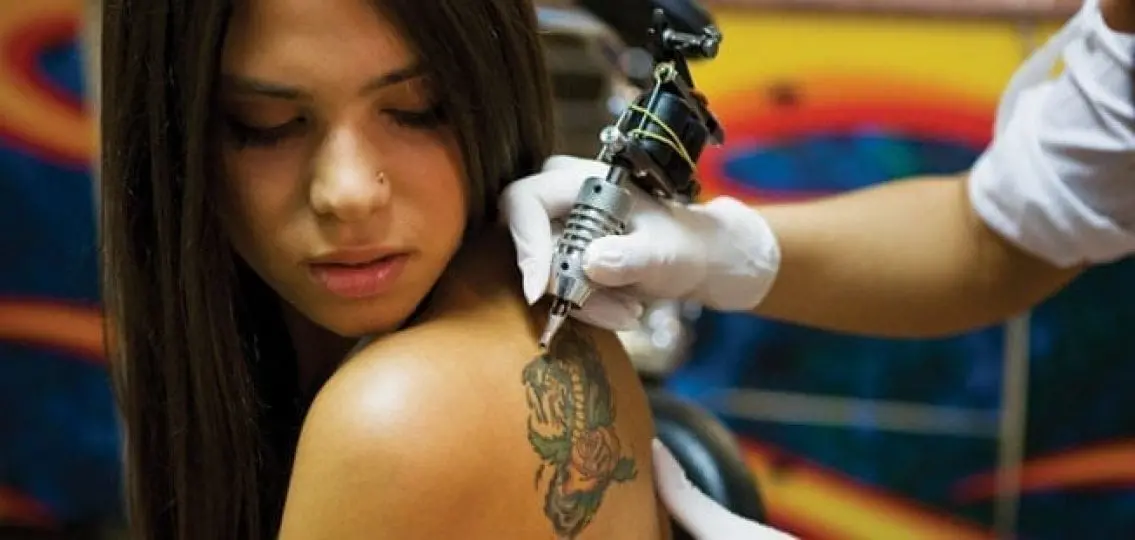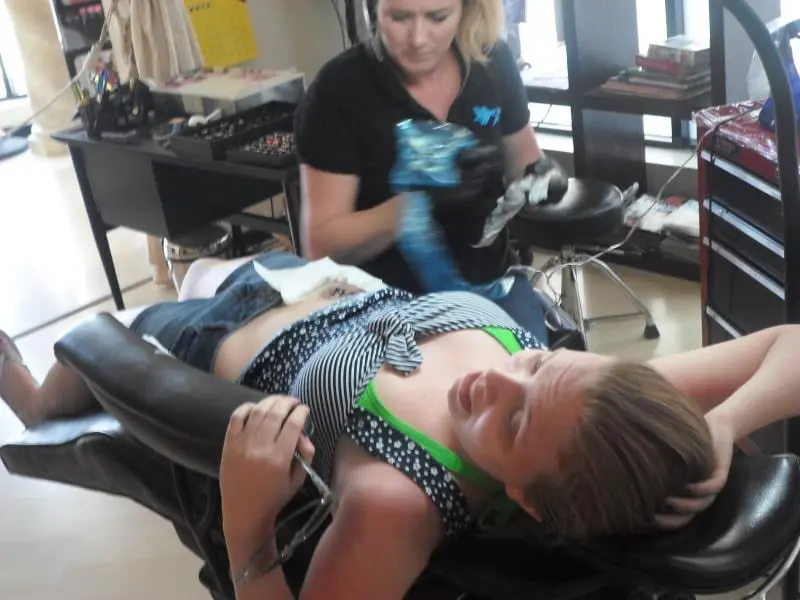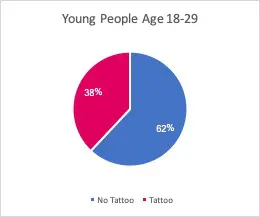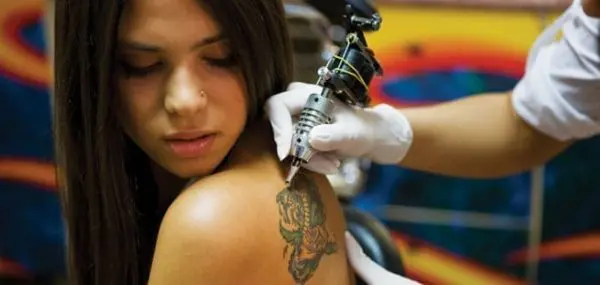About 40 percent of Americans have a tattoo, according a 2014 poll by NBC News. So, no surprise, that getting “inked” is increasingly popular with teenagers. We asked an adolescent psychologist and a teenager for their best advice about tattoos for teens.

Many under-18s are now getting body art. And a bunch more head to the parlor about twenty minutes after they reach the age of majority.
Tattoos for Teenagers: Advice for Parents
Often, the more parents attempt to pressure teenagers away from tattoos, the more quickly they’ll rack up the body art. Nevertheless, here’s my list of criteria parents should urge their teenagers to consider before getting a tattoo:
1. Watch at least ten episodes of “Tattoo Nightmares”.
It’s an entertaining way to learn what not to do when it comes to tattoos for teens, and the art those three turn out is simply amazing. Any young person who wants permanent ink on their body needs to settle for nothing less.
2. Go for the long plan.
It’s hard at 18 to know what you’ll like at 35, but that has to be your goal.
3. Avoid names.
The only exception might be for your children—which usually isn’t relevant for the late teen crowd.
4. Don’t go overboard.
Many folks with a lot of ink admit it can be addicting. Addiction isn’t a good reason to do anything. I’ve had numerous well-tatted clients express disappointment at 34 in art they loved at 21. And many of them have some really good tattoos.
5. Consider cover-ups when designing your initial art.
No matter how perfectly late teens follow my suggestions, there’s a darn good chance they’ll want a change someday. Some tattoos for teenagers are easier to cover than others. Go for one of those.
[It goes without saying, you should help your teenager find a clean, safe, and reputable tattoo studio.]
Just as with a discussion of sex, parents who calmly sit with their kids and go down this list of ideas create an environment of authentic choice. And the more teens or young adults feel they’re making a real choice, the more likely they are to make a good one.
I Got A Tattoo: Advice from a Teenager
By Kyra Haas
I recently celebrated my tattoo’s second birthday. We didn’t go out for ice cream or anything. But I did revel in the fact that I still don’t regret getting a silver dollar-sized doodle permanently etched into the skin over my hipbone.
Make no mistake—my parents aren’t liberal hippies begging me to express myself by paying someone to repeatedly inject permanent ink into my skin. I think I caught them on a weird day or perhaps they thought I wouldn’t actually go through with it, but my mom signed the consent form and watched me shell out my summer job earnings to the artist as we discussed potential designs and placement based on the sketches I’d conveniently brought with me. My generally conservative parents decided that I was old enough to make my own decision when it came to tattoos. That is, as long as I took responsibility and paid for it.
It will come as no surprise that in the last several years more teens and young adults have been getting tattoos than did their parents or grandparents. According to a 2010 Pew Research Center report, 38 percent of people aged 18 to 29 have at least one tattoo and about half of those have between 2 and 5.
I’ll admit the adrenaline rush in the post-tattoo parlor period is exhilarating. And with it came a new, uncharacteristic desire for attention and affirmation of my decision. That was difficult to obtain discreetly, given my clothing usually covers the tattoo site. My inked friends must have felt the same way, as evidenced by their donning of tank tops or shorts at every opportunity to better feature their body art.
However, the growth in this industry does not appear to stem from a “look at me” mentality. Nor does it seem rooted in rebellion. In fact, research suggests tattoos no longer serve as a means of discovering one’s identity, but rather of defining it. In a series of studies—in 1998 and 2006—researchers from the University of Arkansas found that, while both groups used tattoos to express themselves, the latter did so to reaffirm that they actually had an identity. Study co-author Jeff Murray hypothesized that rapidly changing culture created a “loss of personal anchors needed for identity,” and that tattoos could re-establish for their owners a sense of stability, predictability and permanence.

I see some truth in that assertion. Sixty years from now, after our texts, Instagrams and Twitters have been lost to cyberspace, my friends and I can point to our wrinkled, faded tattoos for teens as one of the few lasting expressions of who we are and where we came from.






